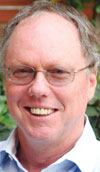

Queue management is an area where all parts of a total security strategy come together. It is effectively the process of managing the flow of people to a desired point, and ensuring the efficient and orderly movement of people as part of this process. Physical security is obviously a crucial element of this in ensuring there are physical structures to control and direct the movement, and that there are people on the ground to provide guidance and management of the flow. Access control forms a part in managing points of entry through the various perimeters involved in the area and checking for contraband. CCTV can play an essential part in monitoring the area and detecting problems before they begin, and video analytics are starting to play a part in this as well.
Finally, ensuring that an effective response function is in place is also important to ensure that one can react to and defuse potential issues.
Queues can be one of the most frustrating places in our daily lives, whether in the bank, the movies, airports, toilets, on the road, or in entertainment venues. They can also be one of the most potentially disruptive, dangerous, and even fatal social occasions to be at. In the mining industry, for example, the process of hoisting people from two or three kilometres underground at shift changes is taken seriously given that South African miners who have finished shifts and have felt they have waited long enough have on a number of occasions rioted in protest at excessive delays. Trying to control a riot 2 km underground is not something management wants to do on a regular basis. Even more mundane environments can be dangerous. Various press reports highlighted an incident at the end of 2008 when a Wallmart security guard got trampled to death by an urgent group of shoppers wanting to enter the store for a sale. “Shoppers at the Valley Stream store have been called ‘rabid', ‘pathetic’ ‘savages’ with ‘no souls’“, reported Time.com (Ripley, Dec, 2008).
South Africans are not generally good with queues, and with the 2010 FIFA World Cup coming up, there needs to be a great deal more focus on this area. This is not just at stadia, but in every aspect of where people are likely to interact. Those who live here witness some people queue jumping with seeming impunity with no security or police present to do anything. Vehicles driving on the verge, yellow lines, or even the opposite side of the road are common where there are backups of any kind, and this is not just taxis. Escorted politicians are hardly shining examples with people being driven off the road or, in one instance, even shot by escorts. In the last few years I have seen people nearly crushed at a stadium entrance that was totally insufficient and inadequately controlled for the number of people, to the extent that some parents were holding children up in the air for fear of being trampled. At one of our major airports I have seen customs queues almost build up to stairways where disembarking passengers are entering the hall, and in another case early morning check-in queues blocking the top of escalators where passengers were coming up with trolleys and other luggage. While waiting an hour and a half in the hot sun with my family in the queue to get tickets at one of Johannesburg’s major outdoor amusement venues in November, I started taking notes of people bypassing the bag searching point, jumping ahead in the queue, choke points where wide queues had to funnel through an entrance allowing only one person at a time, inadequate cashiers to handle the numbers of people and who also had to shout through thick glass to make themselves heard properly, virtually no signage, no attempt to clear people through congestion points, and an absence of any crowd control or supervision by security. With no cover or cooling facility, various people waiting in the hot sun were feeling faint, particularly children. Once in, my children reported others commonly jumping the queue at the amusement rides. These kinds of conditions are not unique to South Africa, but if we are going to provide a safe and welcoming environment for World Cup visitors we are going to have to do a lot more. This is going to mean addressing both the values and outlook of South Africans and the way queues are managed and controlled. I attended a U2 concert at the Olympic Stadium in Sydney about two years ago with 80 000 people. From directions through the railway station, dedicated trains, not one incidence that I saw of queue jumping, and efficient screening of bags, and a widespread security presence, it provided a model queue handling experience. The only glitch was returning back from the stadium people were not being guided effectively to the different station entrances. This caused an enormous queue for a small percentage of the platform entrances which could have been distributed easily across other available entrances if people had only been informed.
Dr Keith Still at the specialist site, crowdcontrol.co.uk, highlights that queues are essentially influenced by service rate and arrival rate. This results in relatively complex equations to be able to calculate queue lengths and movement speeds. This is going to be an essential factor if one is wanting to ensure that the facility where the queue management takes place is going to process people efficiently. Highlighting Dr Still’s comments, the Time.com article also notes that competition increases crowd and queuing problems. Having a fair system where people who arrive first go in first and people know and accept the rules is important. The article also notes that crowds are deaf and dumb. People behind often do not know what is happening in front. This is one of the factors that results in continued pushing when people in front are in danger of being crushed or trampled. Thirdly, the article highlights the fact that the physics of density and movement matter most of all. “When crowds are moving, there should be no more than two to four people per square metre to prevent injury. It is a simple mathematical reality. Commenting on the Hillsborough Stadium disaster where 96 people died, they report that “on the terrace, there were 8,4 people per square metre, according to studies of photographs taken before the railing collapsed.” The Ellis Park disaster must have included similar density problems in crowded tunnels.
Reviewing situations in my own experience in South Africa, there are some things that stand out that we should be doing. The first is management of the process – there should be people in the area controlling and directing effectively and doing this as early in the arrival stage as possible. This provides structure, authority, and ensures that appropriate parameters of behaviour are adhered to. There is a consistent trend that I have seen where there is insufficient security to do this, or that security personnel are ineffective or do not even try. The second is supplying information – signage, directions, where you are supposed to stand, help available from queue marshals, and ideally giving people indications of queue progress and speeds. Flow control and avoidance of choke points is also critical as it leads to concentrations of people and bunching with greater densities of people. Safety and comfort are important factors to reduce frustration and, to some extent, desperation. Finally, constant monitoring with technology such as CCTV with operators trained to recognise key indicators, progress monitoring with access control measurements, and quick responses to resolve issues will greatly enhance the management of moving people in and out of major venues. Effective preparation is going to require the use of technology in modelling venues and monitoring the sites when used, as well as social interventions to ensure that processing and crowd behaviour are as suitable as possible. It is also going to require a lot more training for management and security personnel to do this effectively based on what we see around us at present.

Dr Craig Donald is a human factors specialist in security and CCTV. He is a director of Leaderware which provides instruments for the selection of CCTV operators, X-ray screeners and other security personnel in major operations around the world. He also runs CCTV Surveillance Skills and Body Language, and Advanced Surveillance Body Language courses for CCTV operators, supervisors and managers internationally, and consults on CCTV management. He can be contacted on +27 (0)11 787 7811 or craig.donald@leaderware.com
| Email: | sales@leaderware.com |
| www: | www.leaderware.com |
| Articles: | More information and articles about Leaderware |

© Technews Publishing (Pty) Ltd. | All Rights Reserved.